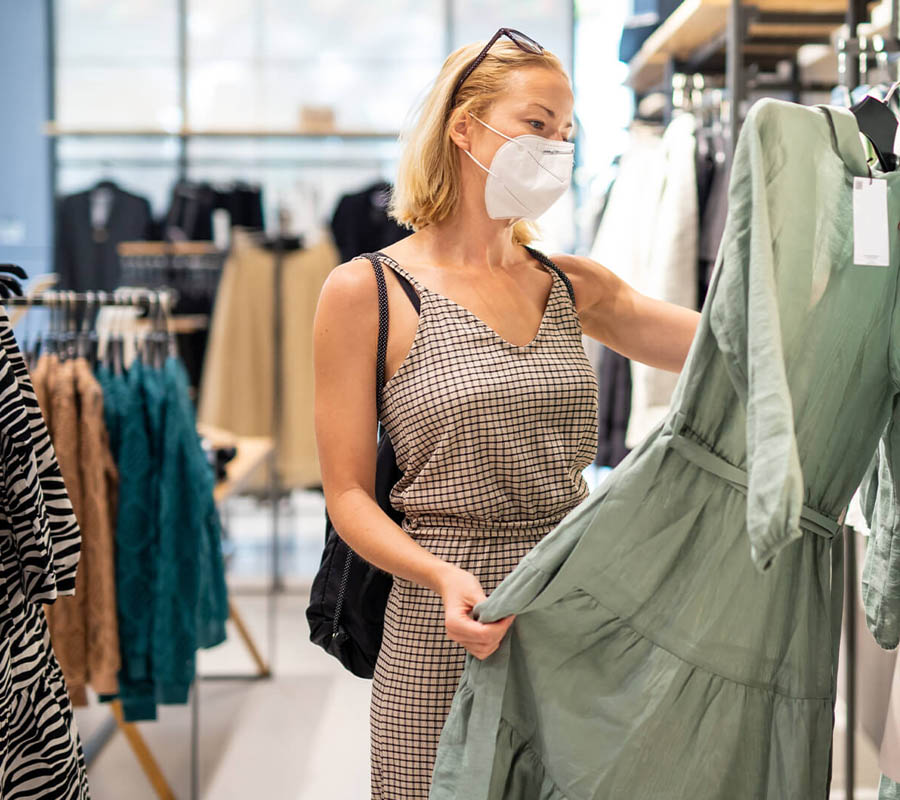Whether excellent advice, trying out and trying on the products, store design, visual merchandising – a unique shopping experience for customers is made up of many factors. One of the challenges of brick-and-mortar retail is to optimally accompany the customer journey on the Internet beyond the shopping experience in the store. Another way to attract and retain customers is to turn shopping into an event. We have put together 10 tips that guarantee your customers a unique shopping experience.
Tip 1: Seamless transition to mobile shopping
Most users use their smartphones and tablets to search for new products. Sitting comfortably in a café with a glass of latte macchiato and checking out the offers in the nearby shops with your smartphone is part of a shopping spree for many people. If customers know what to expect in the shops from the visual presentation of goods on the Internet, the stationary shops win new customers and attract existing customers.
Tip 2: combine optics and service
Ladies and gentlemen enjoy the service of a personal shopper when buying clothes. Being accompanied by trained salespeople and being presented with clothes that are tailored to your body measurements is a service that high-quality clothing stores offer. They complement the stores’ visual merchandising concepts with the human component. The sellers tell the story of the visual worlds of experience. They combine optics and service.
Tip 3: Generous waiting area
A small café or a spacious waiting area with free WiFi, a well-assorted range of magazines and a personal or automated beverage service ensure that partners and shopping bags are in good hands. While the predominantly male guests feel comfortable, the ladies can shop in a relaxed manner. Stationary shops, whose target groups include families, integrate well-equipped children’s play corners into the waiting area. Matching your concept to the products in the store supports branding.
Tip 4: Gastronomy experience
A sophisticated catering concept with culinary specialties tailored to the target group is part of every larger store. Whether it’s the bookstore with a reading café or the clothing retailer with the starred restaurant – the range of food and drink is part of the shopping experience and ensures that you stay longer. Whether shop operators integrate an external service provider into their own sales areas or run the catering themselves makes no difference to the customers. The latter offers retailers greater design options in terms of visual design.
Tip 5: Convertible interior
An open shop design with a few, flexibly designed interior walls ensures great versatility. Constantly presenting yourself to customers in a new look guarantees variety and attraction. Redesigning the interior for large events such as fashion shows and information events is uncomplicated if there is sufficient space. Events have great advertising effectiveness. With a professional lighting design, they become a big event.
Tip 6: Give influencers space
Influencers are people who enjoy a high profile on social media platforms. As carriers for advertising and marketing, they play a major role. Douglas provides them with their own space in its flagship store on Unter den Linden, where they can shoot their beauty videos and product presentations without time pressure and under professional conditions. Allowing clients to repeat the influencer experience with on-site professional help attracts trending audiences. A Click & Collect station makes subsequent shopping easy: Customers can select the products online, pay for them and pick them up in the store without having to wait.
Tip 7: Sell with displays
The face-to-face sales pitch differentiates between online shopping and stationary business. Well-trained salespeople manage to get customers enthusiastic about a product in addition to conveying actual product properties. Display and screens assume the function of human salespeople. They inform about the advantages and give customers the opportunity to deal in detail with a product that is presented separately from the other goods.
Tip 8: Shop in shop concept
The concept of providing customers in the best shopping location with a new type of retail and shop-in-shop concept earned the Vaud Store in Hanover the “Store of the Year” award from the HDE (Handelsverband Deutschland). The operator Realtale offers luxury and design to customers who see themselves as brand brokers. He earns by renting out the space. The playful approach with touchscreens, excellent advice and physically trying out the products ensure an exciting shopping experience that also reaches digital natives. The focus is not on selling, but on inspiring people. Adopting this shop-in-shop concept on a small scale and integrating it into traditional sales areas provides variety: pop-up stores are the names of trendy shops that temporarily rent sales areas.
Tip 9: Multisensory
In retail, visual communication is the most important part of the shopping experience. Not overloading the stores with products, selling them with music and scents as well as optimally appealing to the sense of touch are important factors in offering customers a multi-sensory shopping experience. Interaction with salespeople, whether in digital form in the sense of large touchscreens or real people, plays an important role in making a purchase decision. Addressing all of the senses offers a retailer additional opportunities to stand out from the competition.
Tip 10: Self-Service Checkout
With optical sensors and digital evaluation, the number of open cash registers can be optimally calculated in order to guarantee customers the maximum acceptable waiting time. At peak times and seasonally, there are always waiting times in brick-and-mortar shops. Customers abort the purchase process in frustration. The possibility of making tech-savvy customers available to scan their own cash registers relieves the cash registers manned by sales staff. They are the ideal addition to a visual merchandising concept in the store, in which the customer can act as independently as possible.


